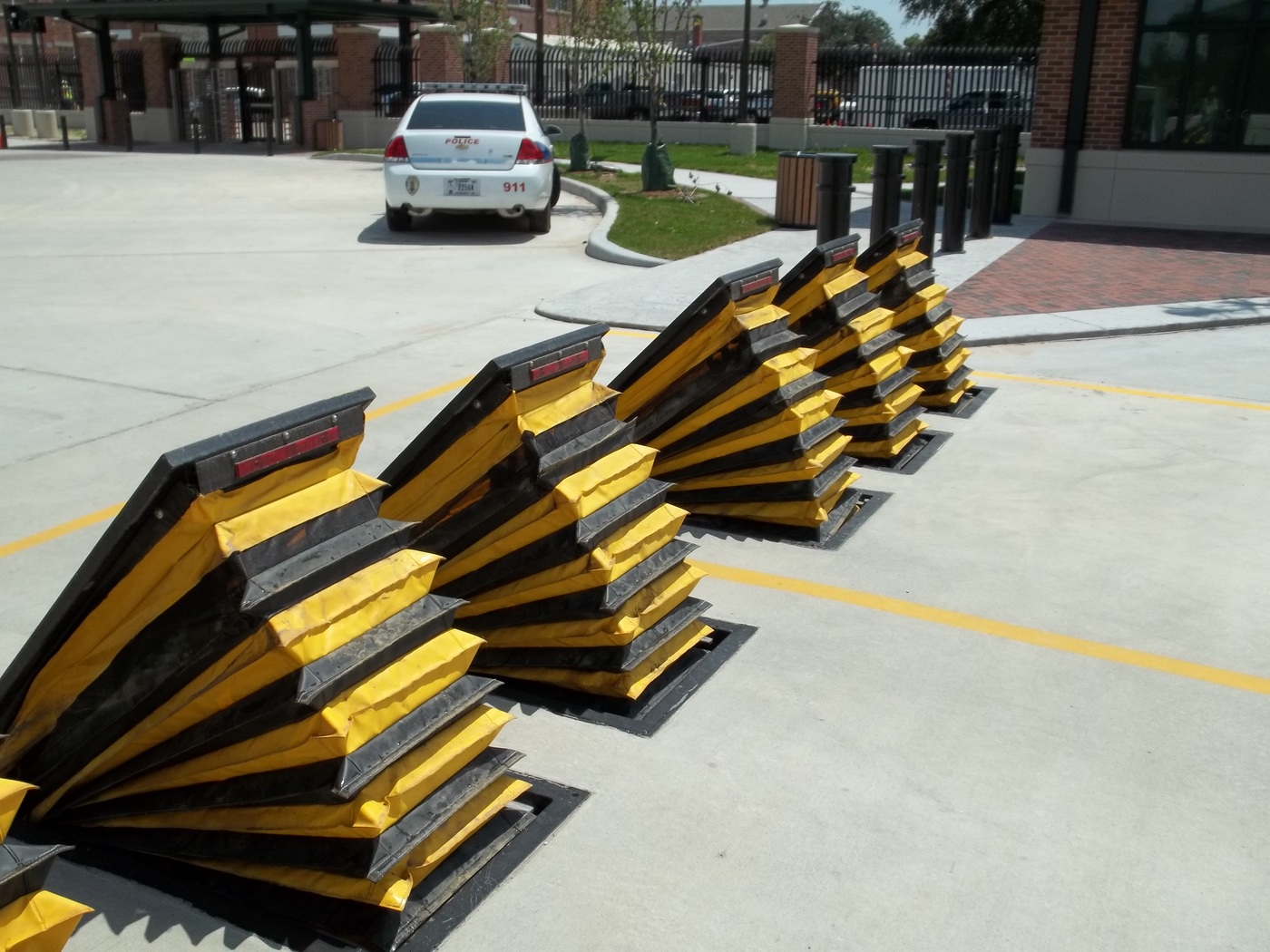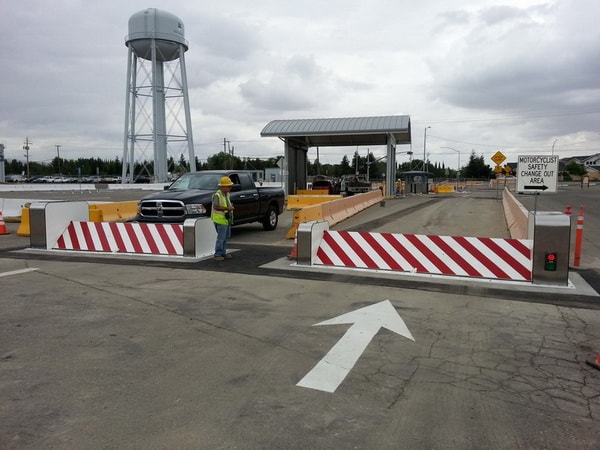10 Simple Techniques For Wedge Barriers
Table of ContentsThe Greatest Guide To Wedge BarriersThe smart Trick of Wedge Barriers That Nobody is Talking About


18 may be done extra quickly, quickly, and expense properly. FIG. In particular personifications, the support 30 may be a steel structure including plates, beams(e. g., I-beams ), and/or various other frameworks that are protected within the foundation 14, which may be concrete. At the surface area 12, a top side 28 of the support 30 may go to least partly subjected
, therefore making it possible for the accessory of the obstacle 10 to the anchor 30. g., threaded holes)in several beam of lights or plates of the support 30 might be exposed to the surface 12. In this manner, bolts 32 or other mechanical bolts might be utilized to secure the obstacle 10 to the anchor 30. As the obstacle 10 is installed to the surface area 12 of the foundation 14, collection of particles and various other product underneath the obstacle might be reduced, and parts of the bather 10 may not be subjected to below grade environments. As indicated by recommendation character 52, the training mechanism 50 consists of parts got rid of below the wedge plate 16. As an example, the parts 52 beneath the wedge plate 16 might consist of an electromechanical actuator, a cam, one or even more web cam surface areas, and so forth. In addition, the training mechanism 50 consists of a spring setting up 54
The spring rod 58 is coupled to a webcam(e. g., webcam 80 shown in FIG. 4) of the lifting system 50. The springtimes 60 disposed regarding the spring pole 58 are kept in compression by spring supports 62, consisting of a repaired springtime assistance 64. That is, the fixed springtime support 64 is fixed about the structure 14 et cetera of the bather 10.
See This Report about Wedge Barriers
The staying force applied to
the cam camera deploy the wedge plate 16 may be provided offered an electromechanical actuator 84 or other various other. The springtime setting up 54 and the actuator 84(e. Wedge Barriers. g., electromechanical actuator)might operate together to equate the cam and raise the wedge plate 16.
As stated over, the springtime setting up 54 exerts a constant force on the webcam, while the electromechanical actuator might be regulated to apply a variable force Visit This Link on the web cam, thus making it possible for the training and lowering( i. e., deploying and retracting )of the wedge plate 16. In particular personifications, the continuous force applied by the spring setting up 54 may be flexible. g., electromechanical actuator) is disabled. As will be valued, the spring setting up 54 might be covered and shielded from debris or various other elements by a cover plate(e. g., cover plate 68 revealed in FIG. 4) that might be substantially flush with the elevated surface 38 of the structure 14. As pointed out above, in the deployed position, the wedge plate 16 offers to obstruct gain access to or travel past the obstacle 10. The barrier 10(e. g., the wedge plate 16 )might block pedestrians or cars from accessing a residential property or pathway. As gone over over, the obstacle 10 is affixed to the anchor 30 protected within the structure 14,

front brackets 71. As a result, the affiliation assemblies 72 may pivot and revolve to enable the collapse and extension of the affiliation settings up 72 during retraction and release of the bather 10. The link settings up 72 reason motion of the wedge plate 16 to be restricted. If a vehicle is taking a trip in the direction of the released wedge plate 16(e. For example, in one situation, the security legs 86 may be extended throughoutmaintenance of the barrier 10. When the security legs 86 are released, the security legs 86 support the weight of the wedge plate 16 against the surface area 12. Consequently, the training mechanism 50 may be shut off, serviced, gotten rid of, replaced, and so forth. FIG. 5 is partial viewpoint sight of an embodiment of the surface-mounted wedge-style barrier 10, showing the cam 80 and the cam surfaces 82 of the lifting system 50. Especially, two web cam surface areas 82, which are referred to as lower cam surface areas 83, are placed below the camera 80. The reduced cam surfaces 83 may be repaired to the surface area 12 (e. For instance, the lower web cam surfaces 83 and the installing plate 85 might develop a solitary piece that is secured to the support 30 by screws or various other mechanical bolts. Furthermore, 2 web cam surfaces 82, which are referred to as upper camera surface areas 87, are placed over the cam 80 and combined to (e. here are the findings In other personifications, intervening layers or plates might be positioned between the surface 12 and the lower camera surface areas 83 and/or the wedge plate 16 and the top camera surface areas 87 As stated above, the cam
80 equates along the camera surfaces 82 when the wedge plate 16 is lifted from the pulled back placement to the deployed placement. Furthermore, as mentioned above, the springtime assembly 54 (see FIG. 3 )may supply a force acting upon the webcam 80 in the instructions 102 by means of spring rod 58, which may reduce the force the electromechanical actuator 84 is called for to relate to the cam 80 in order to actuate and raise the wedge plate 16. 1 )to the released placement(see FIG. 4). As shown, the camera 80 consists of track wheels 104(e. g., rollers), which contact and translate along the webcam surface areas 82 throughout procedure.